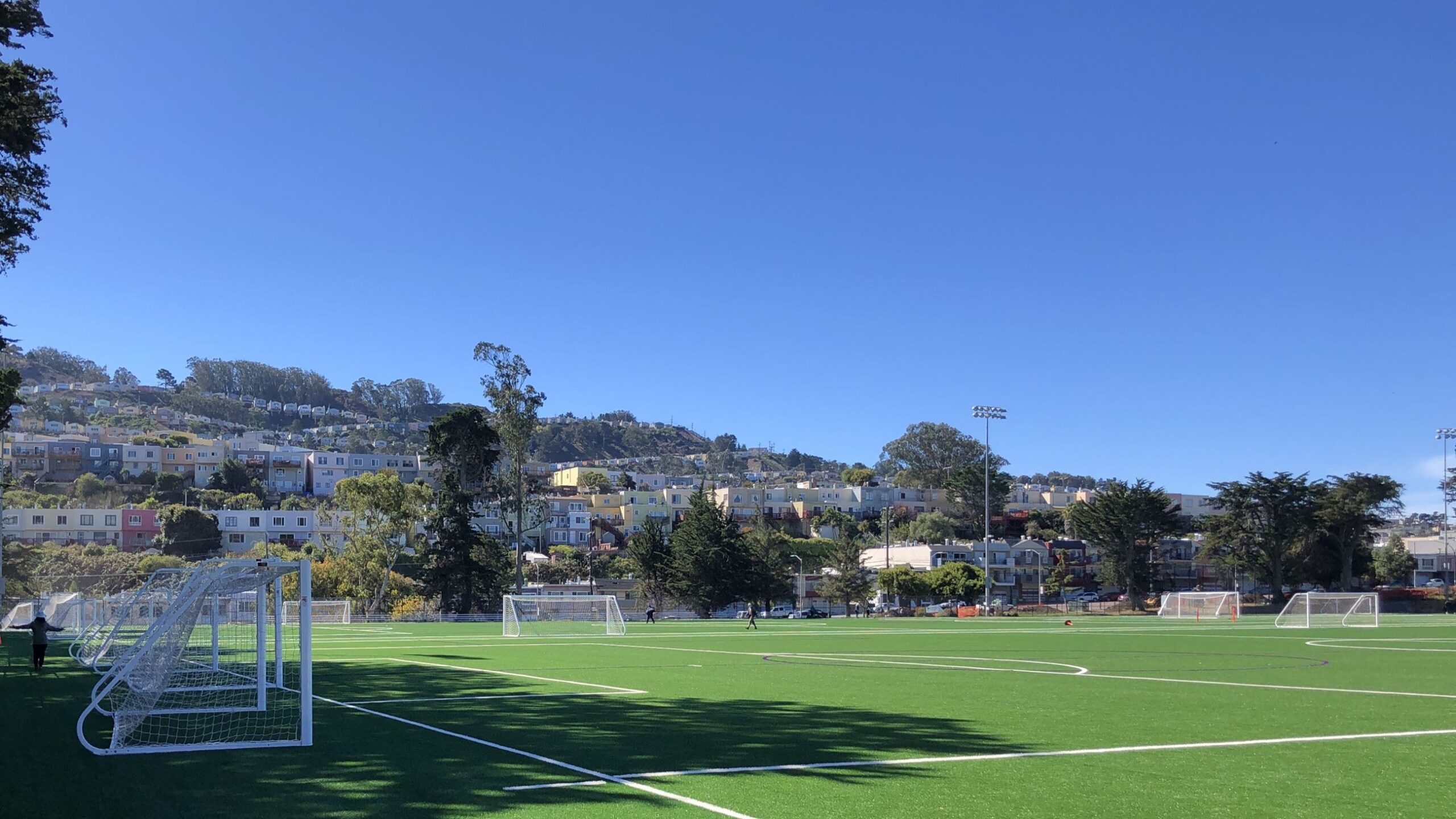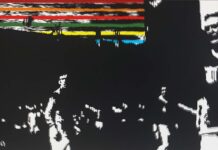After a pair of big wins in the first two rounds of the U.S. Open Cup, the buzz around amateur side El Farolito SC has spread across the nation. We take a look at the historic team based out of San Francisco, as well as the restaurant it shares a name and manager with.
When you hop out of the BART station on 24th Street and Mission Street in San Francisco, you aren’t quite sure where to focus your eyes. Dozens of brightly colored buildings and rows of fresh produce from a diversity of markets all compete for your attention.
But among the fray and sensory overload in one of the city’s most colorful districts lies one of the best burritos in the Bay Area. You don’t have to walk far to find an unassuming building with a yellow sign above that reads in red lettering, “Taqueria El Farolito.”

Santiago Lopez, who manages the restaurant passed down from his father Salvador Lopez, sat down with me and served me a super burrito with carne asada and two samples of agua fresca — one horchata and the other maracuya — to wash it down.
“What you’re having right now is all in connection to all that vibrant energy and all these different establishments that you see in this area,” Lopez said.
Simply saying that the food is good and that you should come and try it does not do El Farolito justice. The restaurant’s influence on the vibrant energy Lopez mentioned runs deep in and out of the kitchen, all the way to Boxer Stadium, where an NPSL team by the name of El Farolito SC plays its home matches.
It was for the recent performances of this amateur club that the name of the team, and thus the restaurant, has appeared on several news outlets across the nation in the past weeks. Most notably, the team beat Portland Timbers 2 in the first round of the U.S. Open Cup — a “cupset” that caught the attention of many. El Farolito would continue its run in an exciting second round win against USL League One side Central Valley Fuego.
El Farolito, a semi-pro club based out of San Francisco, CA and named after a chain of burrito restaurants, are through to the third round of the @opencup after upsetting USL's Fuego FC 🌯
They previously beat MLS Next Pro side Portland Timbers II 👏
— CBS Sports Golazo ⚽️ (@CBSSportsGolazo) April 3, 2024
“It’s a different type of climate, those types of club games,” said Lopez, who simultaneously helps run the restaurant and its chain and is also the head coach of El Farolito SC. “So we knew that we could take advantage of that.”
Earlier this year, U.S. Soccer announced that only a select few MLS teams would participate in the Open Cup. This left other teams’ MLS Next second teams to compete.
“It’s good that an organization that is looking to create talent exposes their players (to) those types of situations,” Lopez said. “For us, we’re not all about development. We’re all about results and we want to field the best players regardless of their age.”
The new atmosphere of the Open Cup sets up new pathways for these amateur clubs who want nothing more than to show they can compete with the pros.
El Farolito’s win against Timbers 2 and Central Valley Fuego was both a display of will and an ironic interpretation of U.S. Soccer’s decision to exclude most MLS teams. While it was not a decision about competitiveness, it does show that the tournament excites and is one that should be taken seriously.
“Unfortunately not all the pro teams are able to play, (but) on the other side, it’s also good for the grassroots and the amateur clubs because now there’s gonna be more chances of ‘cupsets,’” Lopez said. “There could be a chance for UPSL, NPSL, (and) USL 2 teams to enter and go on these cup runs and maybe possibly knock out a USL Championship team and appear on the fourth round, which is very, very difficult.”
El Farolito SC has established itself as a household soccer name in San Francisco, and it is woven into the fabric of soccer culture in the city. If you ask around, you’re bound to find someone who fondly remembers Lopez’s father, Salvador, also known as “Don Chava,” for his love of the restaurant and team he established and cared for.
Salvador Lopez opened the restaurant in 1983, and two years later, El Farolito SC played its first season in the San Francisco Soccer Football League.
There, the team saw success as it reached the top of the league and won the championship in the 1991-92 season. After that, the team changed its name to C.D. Mexico for a brief spell.
The success continued to brew and reached a peak in 1993. That year, C.D. Mexico won the U.S. Open Cup after beating the United German-Hungarians 5-0. The trophy now sits in the team’s home: a bar adjacent and connected to El Farolito that shares the same name.
Most recently in 2017, the team once again found itself with a lot of momentum, decades after not appearing in the tournament at all. In 2023, El Farolito SC faced the Oakland Roots in the first round of the Open Cup.
Now they shake up the U.S. soccer landscape with yet another promising Open Cup run.
While many distinguish the team and the restaurant as two separate entities, the reality is that the restaurant and the team are parts of the same being; they are born out of the same passion even if they exist in different spheres.
“If you look at the soccer, you got to go somewhere else, which is Crocker-Amazon,” Lopez said. “Crocker-Amazon for me is the foundation of the most important places and the foundation of the Latino soccer community.”

Crocker-Amazon is a district in San Francisco south of Mission Street. The ethnic diversity of the region is crucial to part of its identity, and places like the Crocker-Amazon soccer fields help elevate its culture.
As I finished my burrito, I thought more about how soccer fans in the Bay Area (quite literally) consume culture. I asked Lopez what he thought about the team being referred to as “the burrito team.”
“For us, it was great to hear ‘the burrito team’ and whatnot,” he said. “It’s amazing because the way we basically run our soccer team is the same idea that we run the taqueria. Which is thinking about community. It’s thinking about teamwork. Discipline. It has to constantly be working. We connect in the same way, so to me it’s fantastic.”
Lopez took me inside the restaurant’s kitchen where I could see close-up how the food was made. I saw the same burrito I ate carefully crafted into a delicate work of art wrapped in aluminum foil.


The menu consists of tacos, ceviche, tostadas, quesadillas, tortas, enchiladas, and more.
“I think the most traditional one would be the super steak burrito,” Lopez said. “But then there’s people that are like ‘Oh, I’m done with burritos.’ They should discover other things. I highly recommend the super quesadilla.”
Lopez also pointed out the Mexican Torta and the Super Nachos as something you can share with the table.
A lot of people were waiting in line, and I probably looked very weird and out of place taking pictures of the kitchen. I quickly scooted out of there.

I looked at the menu again. The variety of items represented to me the complexity of San Francisco in its different backgrounds all united by a common longing for culture (and hunger, I suppose).
The way people look at the menu or their food being made is the way they excitedly watch El Farolito SC take on the field. There is no difference between food and sport in the way we consume it. At the end of the day, they’re both representative of culture.
I shook Lopez’s hand and thanked him for everything. I caught the next BART back to the East Bay, with my stomach full thinking about how rich and spoiled the Bay Area is when it comes to food, soccer, and thus, culture.








